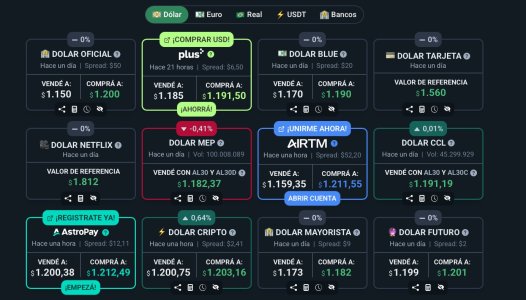I have only been in Argentina for a little while now but I am still confused by all of these exchange rates. I understand the blue dollar is the cash rate but I feel like an idiot that I have been here almost a year and I still don't fully understand all of the different exchange rates. I hope I don't come across as an idiot expat. But I thought if I have this question others probably do too.
Despite being here so long, I’ll admit I don’t follow local politics too closely or read the newspapers daily, so I often feel out of the loop when it comes to economic policies. Now that the peso has been relatively stable for the past 6 to 8 months and the blue dollar seems to have faded away, I find myself wondering about all these financial terms that keep coming up.
So, here’s what I think I understand:
But then there are a bunch of others I hear people mention:
Sorry if I sound completely uninformed, but I figured if I’m wondering about these things, maybe some newer folks are too.
Despite being here so long, I’ll admit I don’t follow local politics too closely or read the newspapers daily, so I often feel out of the loop when it comes to economic policies. Now that the peso has been relatively stable for the past 6 to 8 months and the blue dollar seems to have faded away, I find myself wondering about all these financial terms that keep coming up.
So, here’s what I think I understand:
- “Dólar oficial” – That’s the official exchange rate used by banks, right?
- “Dólar blue” – That one’s the informal or parallel rate you’d get from unofficial exchanges?
But then there are a bunch of others I hear people mention:
- CEPO – People say it’s over, but what exactly was it?
- “Dólar tarjeta” – Is that the rate you get charged if you use an Argentine credit card abroad?
- “Dólar turista” – Is that the rate tourists get when they use a foreign card inside Argentina?
- “Dólar MEP” – This one really confuses me. What does MEP even stand for? Everyone seems to talk about it like it’s common knowledge, but I’ve never seen a clear explanation.
- “Dólar mayorista” – I’m drawing a blank on this too.
Sorry if I sound completely uninformed, but I figured if I’m wondering about these things, maybe some newer folks are too.



